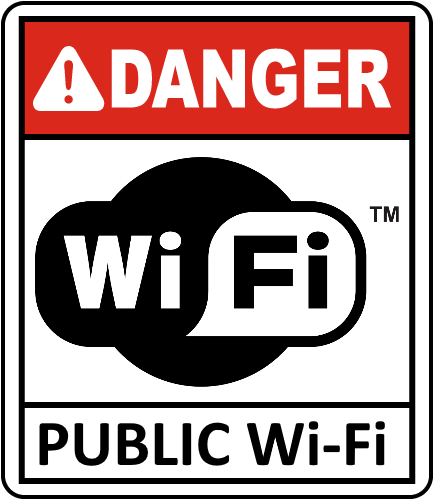Public Wi-Fi may seem like a convenient way to get free quick access to the Internet – but it comes with some risks.
What’s wrong with public Wi-Fi?
 The risk with public Wi-Fi is not knowing, or being able to trust, the person running the network.
The risk with public Wi-Fi is not knowing, or being able to trust, the person running the network.
Just like any other network – whoever controls it can access what you send and receive.
Having this control they can inspect the websites you access or perform man-in-the-middle attacks to get access to your passwords.
These tips focus on how to avoid this risk.
1. Know what you are connecting to
Caution: hackers can setup their own Wi-Fi network with the same name.
Before connecting to a Wi-Fi network – check the network name carefully and ask an employee of the business if it is correct.
Try to use Wi-Fi networks that are offered by reputable sources – such as a businesses or government bodies.
2. Secure network settings
With Windows 10 – the first time you connect to a network it will ask you if it’s a public, private or guest. Choose ‘guest’ to automatically secure your network settings.
If you’re not using Windows 10 – make sure your firewall is enabled and sharing preferences are disabled.
3. Consider your physical security
Even if you can trust the public Wi-Fi network – consider your physical security.
Public Wi-Fi is just that – public – so it’s likely you’re not familiar with the environment – there may be people or cameras that can see what you’re doing.
This could reveal the content of your emails, password or other personal information.
4. HTTPS everywhere
Use websites that have HTTPS – so all the network can see is who you connect to and not the content of the website.
The HTTPS Everywhere, from the Electronic Frontier Foundation plugin will help you make sure HTTPS is used. It does this by first trying for HTTPS then if it’s not supported using plain HTTP.
5. Use a VPN
Caution: not all VPN’s are secure – don’t use a “free” VPN – and carefully research the reputation of the VPN. Private Internet Access is a good choice.
Using a VPN (Virtual Private Network) is the safest way to use public Wi-Fi.
VPNs encrypt your traffic by using an encrypted tunnel between the client (you) and server.
Anyone snooping on the network will only see your connecting to the VPN and how much traffic is being used – not how it’s being used, what websites are being viewed etc.